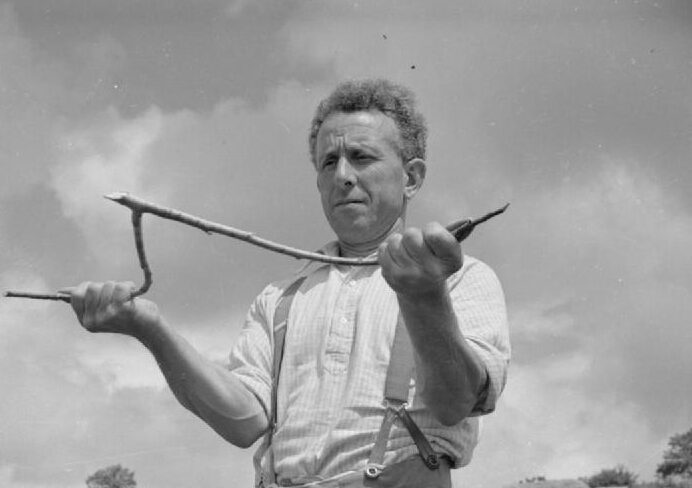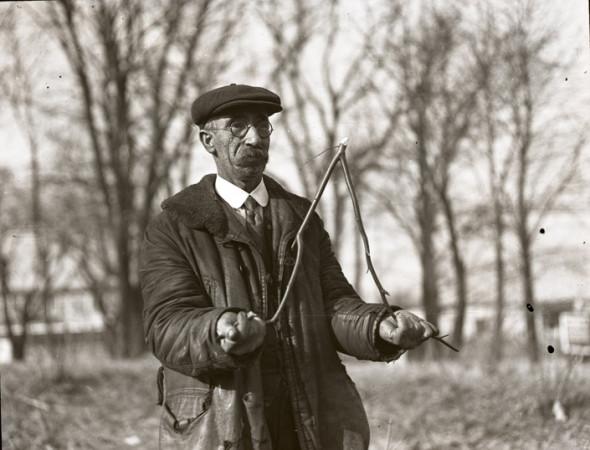Does Water Dowsing Work?

Everyone knows I spend a (likely unhealthy) lot of time browsing Amazon. Recently, I came across this item. It was listed in the Industrial and Scientific section and had, as of October 2021, a 4.5-star rating with over 1000 positive reviews. Everyone seemed very happy with their purchase, with some reporting how easily and accurately they detect water, gold, and ghosts. I'm not sure how ghosts got wrapped up there, but hey, it's 2022, and anything goes. With that being said, let’s talk about dowsing.
Dowsing is the practice of using a focus item to detect the presence of a particular thing. You'll most commonly see people using a Y-shaped rod to find water. Sometimes they’re trying to find ghosts, gold, or any other object that people think dowsing will help them find. Instead of the rod, sometimes there are two bent metal rods (as seen in the Amazon link) or a suspended crystal. The tool used doesn't really matter since the entire thing is ultimately based on one flawed assumption: that dowsing is real.

Dowsing first came around in the 1400s. When and where it isn't entirely known. Some think it started as a Germanic practice, but there’s nothing firm recorded on the topic until 1518, when it was officially registered as a sin by Martin Luther. Martin Luther decided that it was an occult practice that constituted witchcraft. By 1662, dowsing was determined to work by invoking Satan to lead the dowser to treasure. By 1701, it was illegal under the penalty of death. Consorting with demons was considered a pretty hefty crime back then. I guess the demons found their way into the sticks and whispered the temptation of gold and free water into farmers' ears. Who knows.
Unfortunately, people still believe in this type of thing hundreds of years later. Dowsing was used in the Vietnam War by the military to locate hidden tunnels and is still used in the Afghanistan War. Yes, in 2015, people still believed in this. There is an American Society of Dowsers that holds regular seminars. Not only that, dowsing has spread to the realm of alternative medicine as a treatment for pain. I tried reading articles about this to understand the belief system, but it was far too nonsensical to conclude. The rod points to where the pain radiates from... or something? Some places are too deep for even a badger of science to burrow.
At this point, you’re probably wondering what people are doing. Fundamentally, they’re aiming for a tool of some sort and following it toward where they think the treasure is. If it worked, the dowsing rod would be drawn toward a treasure chest, water, or whatever the dowser wanted. How? The best explanation is psychic powers. The worst answers involve demons and angels. The reality is a little-known effect called the “ideomotor phenomenon.”

What is the ideomotor phenomenon? Well, think back to when you were a kid. Do you remember Ouija boards? Those operated on the same principle. The ideomotor effect is where the individual makes small, unconscious motions. A more common example is emotional crying. Tear duct action is not a conscious decision, at least not usually. The idea is that a subject will unconsciously act in certain situations. When operating an Ouija board, the players unconsciously move the letter selector to spell the words they expect.
Similarly, dowsers will move their rods where they think there may be water. In some cases, they may find it due to subconscious intuition. After all, low points in the terrain are likely spots to put a well. Sedimentary rock also could be a sign that provides a confirmation bias that what they’re doing works.
Ultimately, human intuition is just as practical as dowsing. The rods provide no more particular advantage than any other ritual prop. This is just another form of divination with no scientific basis.





Member discussion